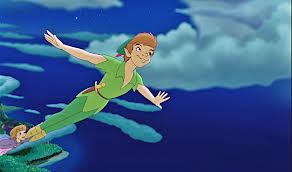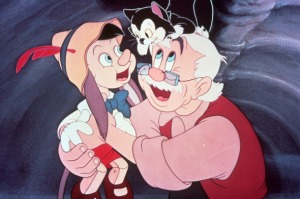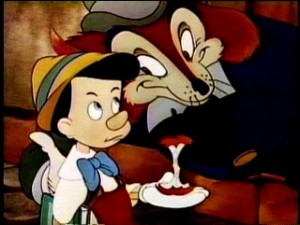Is Winnie the Pooh a classic?
Yes, of course. It has had a pres ence in each of our lives. The majority of people in the U.S. know about Winnie the Pooh or have heard of it. Particularly, it has been successful in capturing the interest of young children; though, Milne wrote the Pooh stories for both children and the child within adults. To this day, Winnie the Pooh remains a multibillion merchandising empire whose trademarks are owned by Disney. Disney has created numerous adaptations based off of Milne’s original stories, and is continuously releasing new Pooh movies, Pooh video games, Pooh TV series/specials, and a great variety of Pooh merchandise.
ence in each of our lives. The majority of people in the U.S. know about Winnie the Pooh or have heard of it. Particularly, it has been successful in capturing the interest of young children; though, Milne wrote the Pooh stories for both children and the child within adults. To this day, Winnie the Pooh remains a multibillion merchandising empire whose trademarks are owned by Disney. Disney has created numerous adaptations based off of Milne’s original stories, and is continuously releasing new Pooh movies, Pooh video games, Pooh TV series/specials, and a great variety of Pooh merchandise.
Now, what is a classic? What makes a story a classic? Well, a classic in the literary context is a story that transcends time and maintains itself as a source of value, relatability, and/or pleasure for the recurring generations. Although each classic is distinctively different from another in its unique form, style, presentation, and/or plot points and storyline, all classics share certain characteristics that nurture their success.
Milne’s Winnie-the-Pooh and The House At Pooh Corner have a distinctive writing style that distinguishes them from other texts. Milne adds humor at the expense of the characters who may have no idea what is going on, but we know all too well. We see such occurrences in chapter three, “Pooh and Piglet Go Hunting and Nearly Catch a Woozle.” Here, Piglet and Pooh are following animal tracks that they hypothesize to be Woozles. The reader is told that Pooh has been “walking round and round in a circle, thinking of something…” (A. A. Milne). Then Pooh and Piglet commence their tracking of some mysterious prints in the snow, which the reader knows them to be Pooh’s own footprints. More evidence of these being Pooh’s (and Piglet’s) own footprints presents itself as Piglet and Pooh come across more pairs of footprints along the same track. It is amusing to the reader to watch two completely oblivious characters waste their time in tracking nothing but their very selves, and then seeing Piglet in fear over what the creatures could be (and how many as well).
Milne uses characters who dominantly express one single trait: Pooh and his constant hunger; Piglet and his anxiety; Eeyore and his depression; Etc. Milne’s intention in doing so is to create a more enjoyable piece; to use exaggerations that are both humorous and enjoyable to the reader. Furthermore, as we discussed in class, because the characters never change and always result back to their original selves by the beginning of the next day (the next story), we have here everlasting characters who will always be in a single state of mind, and whom popular culture can make into infinite adaptations featuring new adventures and experiences, thus keeping Winnie the Pooh classic, interesting, and profitable.
 A good sign of the timelessness of Winnie the Pooh is its popularity in terms of merchandise and profitability. In fact, Winnie the Pooh is Disney’s most profitable franchise, and brings in over a billion dollars in revenues each year. Just surfing through the Disney online store, there are Winnie the Pooh plush toys, figurine playsets, crib bedding sets, mugs, quilts, tees, beanie bags, pillows, slippers, cups, pajamas, and even a limited edition signed artwork for approximately $800.00. It goes to show that children and adults alike enjoy Pooh and may develop nostalgia — or “expensive” nostalgia — for the lovable bear and his companions. There is no doubt that Milne’s Winnie-the-Pooh and The House At Pooh Corner will continue to be classics for years to come as they inspire new adaptations and new adventures that offer joy and value to the young and old alike, as well as for many future generations to come.
A good sign of the timelessness of Winnie the Pooh is its popularity in terms of merchandise and profitability. In fact, Winnie the Pooh is Disney’s most profitable franchise, and brings in over a billion dollars in revenues each year. Just surfing through the Disney online store, there are Winnie the Pooh plush toys, figurine playsets, crib bedding sets, mugs, quilts, tees, beanie bags, pillows, slippers, cups, pajamas, and even a limited edition signed artwork for approximately $800.00. It goes to show that children and adults alike enjoy Pooh and may develop nostalgia — or “expensive” nostalgia — for the lovable bear and his companions. There is no doubt that Milne’s Winnie-the-Pooh and The House At Pooh Corner will continue to be classics for years to come as they inspire new adaptations and new adventures that offer joy and value to the young and old alike, as well as for many future generations to come.















